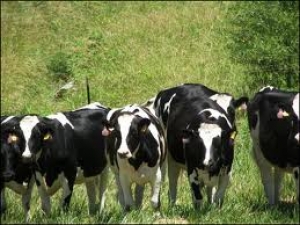Feeds for dairy cows
Enhancing Antioxidant Properties Of Milk Using A Programmed Nutritional Approach

Introduction
This ATI Dairy Pack contains trace minerals in a natural, more available form and additives that promote digestive health in the cow and is formulated to provide all supplemental trace minerals and vitamins needed by the lactating cow. The low inclusion rate pack allows the dairy producer to utilizs this unique technology without major changes to current feeding programmes. The objective of this experiment was to evaluate the impact of feeding ATI Dairy Pack on selenium and antioxidant properties of whole milk and mozzarella cheese.
Experimental Protocol
- Six separate trials were conducted in SW Kentucky dairy herds with farms selected based on their willingness to follow trial protocols.
- The trial protocol included:
- Replacing current vitamin and trace mineral supplementation with ATI Dairy Pack (feed rate = 68 g) for 2-3 weeks.
- Collecting milk samples from 12 cows before and during the ATI Pack supplementation period.
- Collecting approximately 1 gallon of milk from bulk tanks on collection days for mozzarella cheese production.
- All samples were analysed for Se via hydride generation fluorescence (Millennium Excalibur 10.055, PS Analytical).
- Total antioxidant capacity was estimated by ferric reducing antioxidant power (FRAP) and radical scavenging ability by the DPPH assay (2,2-diphenyl-1-picryl hydrazyl). Trolox was utilised as the standard in both assays.
- Data were analysed as a completely randomised design using the Proc Mixed procedure of SAS. For milk samples from individual cows, herd means were calculated and used for statistical analysis.



Results
Selenium content of milk and cheese
- Selenium content of individual milk samples was 33 per cent greater when cows were fed ATI Dairy Pack (P<0.05).
- Se in bulk milk samples was 18 per cent higher when herds received ATI Dairy Pack (P<0.05).
- Cheese Se content increased more than whole milk (+66 per cent, P<0.05).

Total antioxidant capacity via FRAP (Trolox equivalent)
- Total antioxidant capacity of individual milk samples was nine per cent greater when cows were fed ATI Dairy Pack (P<0.05).
- Total antioxidant capacity in bulk milk samples was eight per cent higher but not significantly different when herds received ATI Dairy Pack (P>0.10).
- Cheese total antioxidant capacity was not significantly changed due to ATI Dairy Pack supplementation (P>0.10).

Radical scavenging ability via DPPH (Trolox equivalent)
- Radical scavenging ability of milk from individual cows was 11 per cent greater when cows were fed ATI Dairy Pack though differences did not approach significance (P>0.10).
- Radical scavenging ability in bulk milk samples were 15 per cent higher when herds received ATI Dairy Pack (P>0.01).
- Radical scavenging ability in cheese was not significantly changed due to ATI Dairy Pack supplementation (P>0.10).
Summary
- Increases in milk Se were not unexpected given the organic Se supplementation in the ATI Dairy Pack. In 5 of 6 trials, milk Se increased significantly. In the only trial where milk Se did not increase (Herd 2), further investigation revealed that the herd was fed a source of western US hay that was likely high in selenium.
- Though pre-ATI selenium supplementation program was not used as a criterion in herd selection, there were differences between trials. Herds 1 and 2 were fed inorganic Se, while herds 3 and 4 received 50 per cent, and herds 5 and 6 100 per cent of supplemental Se from Sel-Plex, respectively. However, increases in milk Se were found in herds regardless of pre-ATI selenium supplementation program.
- Total antioxidant capacity was greater in 5 of 6 herds and radical scavenging ability greater in 4 of 6 herds after ATI Dairy Pack supplementation. Again, pre-ATI selenium supplementation did not appear to affect responses in total antioxidant capacity and radical scavenging ability.

Conclusions
- Antioxidant properties of milk can be enhanced through a programmed, nutritional approach.























